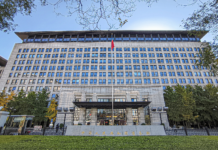At midnight on 5 July, the US forces silently left the Bagram airbase without notifying the Afghan military forces. They left behind hundreds of armoured and non-armoured vehicles and stockpiles of weapons that people looted that night. The Afghanistan government came to know this after two hours of electricity shutdown at about 7 AM.
The matter of concern is what does this midnight departure mean for US policymakers? How will the world look at this? And was it a sign of victory for the Afghans and the Taliban?
The new US administration was no longer interested in forging and enlarging the war with the rising of the Taliban’s power. Joe Biden has had the view since 2008 of settling the matter with political dialogue. However, the last deadline was in September to withdraw all the remaining troops. Now it seems like an early run-up. The US policymakers were not keen to invest more in war, as they already wasted $2026 billion.
Moreover, the world has been seeing this deadly war since 2001. Pakistan since 2006 or2007 has asked the USA to resolve this conflict with meaningful dialogue to save military and civilian lives. Along with this, the European Union was also least concerned and little invested in NATO and war. Thus, the sudden withdrawal is thought of as a “Failed US War”.
It has never used Afghanistan’s land to avoid any military aggression since the 1965 major war. The military establishment must understand this to build cordial relations with the Afghan government and a soft image in the hearts of the Afghan people. As for India, it must not use Afghanistan’s land for future adventures against Pakistan.
The Afghan Taliban, who have been in the region since the USSR’s invasion, were controlling almost 150 districts and 50-plus areas of Afghanistan in July 2021. Comparatively, it is more than they controlled in 2001. They are running to control the entire Afghanistan’s politics, economy, and military affairs. Nevertheless, the Afghan government is looking helpless, weak, and indicating that it will lose the country overall into the hands of the Taliban.
The Worst-Case Scenario:
The sudden leaving of the Bagram base may enhance the Taliban’s motivation for success in the region. Because they have the latest weapons, with manpower to manoeuvre the government. The government is in peril and looking for foreign aid.
1-Resistance of the Afghan civilians
The people of war-torn Afghanistan once again may face a civil rift. Many people are leaving the Taliban’s controlled districts to find peace living in neighbouring countries as refugees. Pakistan is already housing around 2.8 million Afghan people documented and undocumented, a ber numsecond to Syrians in Turkey in the world. It cannot host another influx of people. Because Pakistan after about two decades is moving towards resting the war wounds. As National Security Advisor Moeed Yousuf said in a statement last week, “Time has come for Afghan refugees to go back to their homes. But the Afghan government sources have confirmed that around 500,000 people may leave the country to save themselves from a civil war between the Afghan government and the Taliban.
2- A Civil War is incoming
The Taliban, despite everything, are not willing to be ruled under a western-led government. They want an Islamic rule under pure shariah Compliance, namely the ‘Islamic State of Afghanistan’. The people of the Afghan territory could no longer live under strict and harsh Islamic rule. Thus, if dominating, the Taliban would have clashed with the Afghan government where Taliban are controlling densely populated and busiest land routes of the country. As “the US state department has warned that the region will face chaos in the coming 6 months”. The worst-case destabilization could damage the whole South Asian region’s peace.
3- Women and Minorities right at stake
It is expected that with the plotting of the Taliban’s government in the country, the rights of women and minorities would be at stake. The implementation of the sharia law could jostle the rights of the liberals and working women and men. Hitherto, in the 1990s, the Taliban brutally imposed social restrictions on women such as Burqa covering, and restricted their access to health care, education, and jobs. They also prohibited women from appearing in public spaces. Avoiding the prohibitions would be a daunting task for women and minorities’ rights commissions.ntntt
Additionally, Afghanistan holds up to 82.7 percent to 89.7 percent Sunni majority and it also includes Shia Muslims up to 10 to 17 percent, with 0.3 percent other minority groups. Previously, in 1996, the Taliban had executed many Shiite Muslims, mostly from the Hazara community group. Along with this, they had killed many officials working with Hazara leaders in 2018-19, including the abduction and killing of Abdul Samad Amiri, a Hazara and provincial director of Afghanistan Independent Human Rights Commission (AICHR) . Therefore, women, as well as minorities, are reluctant to accept the new Taliban regime.
The Best Case Scenario:
To avoid anarchy in Afghanistan, the following measures should be taken:
A Comprehensive Rebuilding and Development Plan: It is the duty of the US policy makers along with the NATO member states and other world organizations like the World Bank, IMF, and USAID to provide the wherewithal to the Afghan government for the construction of infrastructure and to uplift poverty in the country. It could only be possible when all the stakeholders will work together.
A role to play for Russia and China: The Eastern superpowers Russia and China would leverage by investing in Afghanistan’s development projects. As China has made Kabul a part of its Belt and Road Initiative, more is needed for the projection of soft power along with smart power. Russia, instead of dwelling in conspiracies to get US soldiers out, must force them to elect a new democratic government to save civilians from devastations.
Pakistan and India need to avoid using Afghan soil against each other in future: Pakistan’s policy of “strategic depth” which gained vogue in the 1980s in the Zia era, has provided nothing except creating violence and terror.
It has never used Afghanistan’s land to avoid any military aggression since the 1965 major war. The military establishment must understand this to build cordial relations with the Afghan government and a soft image in the hearts of the Afghan people. As for India, it must not use Afghanistan’s land for future adventures against Pakistan. Because the ISPR has lamented many times that India is plotting terror acts in Pakistan through Afghanistan. Finally, for a peaceful and stable South Asian region these steps must have a special place in the above-mentioned International actors.






















